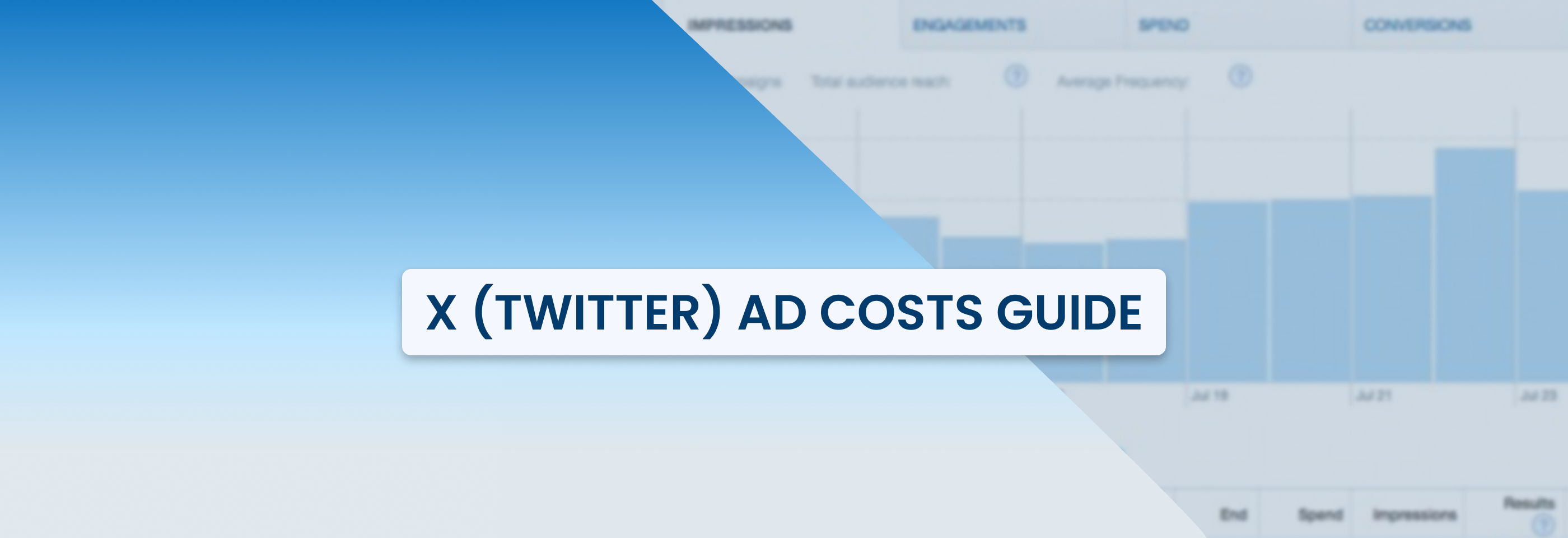How to Stay Ahead in 2025: Key Marketing Trends to Watch Out For
2024-12-27

Marketing is always in flux: consumer habits are changing, technology is evolving, and what worked yesterday might not work today. To win, you need to be smart, creative, and ready to adapt.
In this article, we’ll focus on four key marketing trends that will be relevant in 2025: the power of AI, the ever-changing world of social media, shifting consumer desires, and the crucial role of data privacy. We'll explore each trend and share actionable strategies to use them to your advantage. Let's get started!
1. The growing role of AI
There has been a lot of talking about AI in the past few years. And it’s not just a buzzword —it’s a whole new way of marketing and advertising and one of the most important trends in marketing and advertising of the current decade.
Today, 64% of marketers are already using AI, and the majority think that it has completely changed how they create content. And it’s not just big brands — nearly 60% of small businesses use AI to enhance their marketing campaigns.
Marketers and businesses commonly use AI for:
- Brainstorming new ideas or angles for marketing and advertising campaigns;
- Figuring out the right target audience;
- Repurposing content for different audiences or formats;
- Writing basic copy, outlines, emails, product descriptions;
- Creating simple illustrations and videos.
The best thing about AI is that it helps to not just create more content in less time but also to keep the quality consistently high. Often AI-generated content performs better than human-made content, so AI isn’t just fast — it’s also pretty effective.
AI is actively used in advertising as well: it changes how businesses target and connect with their customers, make ad creatives, manage their ad campaigns, and more. A lot of marketers are excited about AI in advertising, with big companies like Klarna seeing cost savings thanks to using AI.
Big platforms like Meta and Google are actively introducing new AI-based ad automation and optimization tools, and there are more of them to be rolled out in the upcoming year.
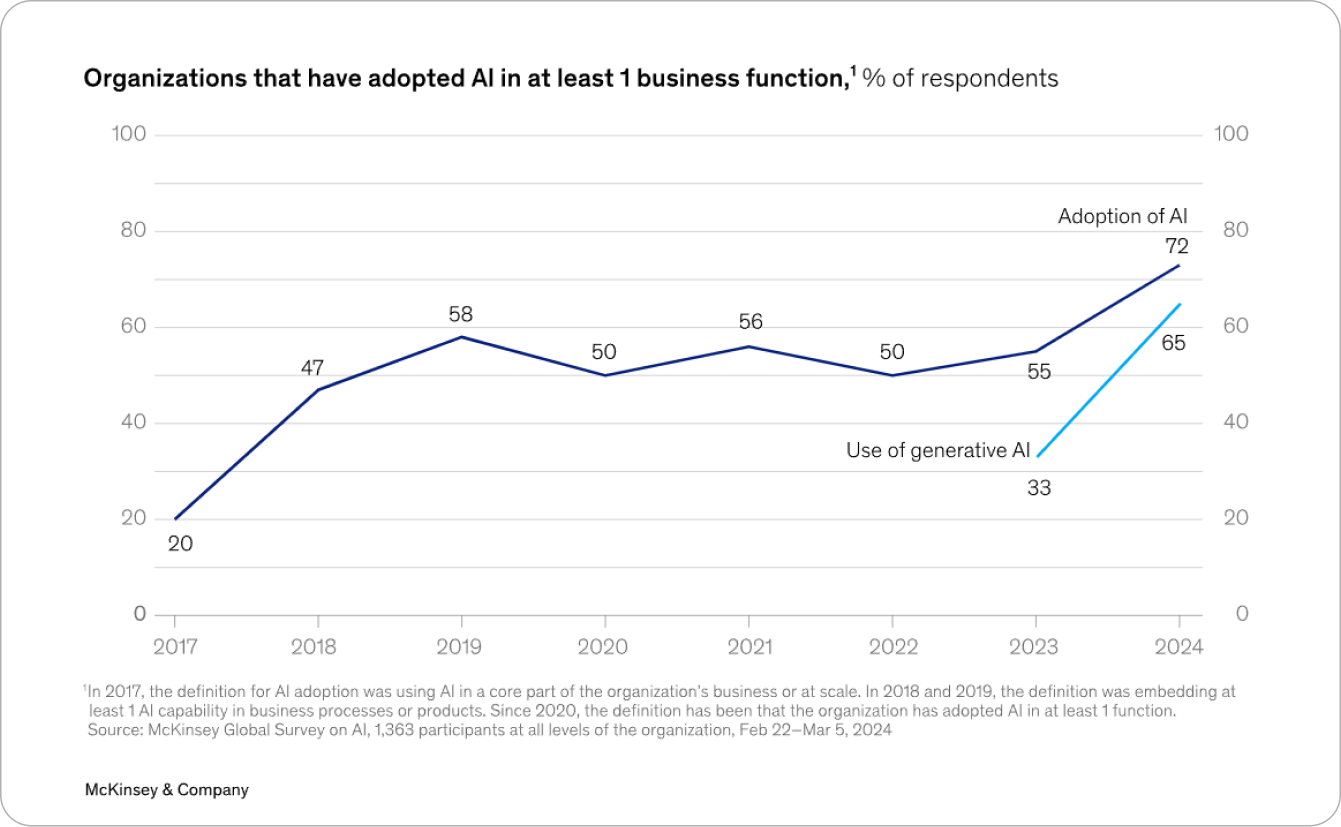
Currently, the majority of businesses use AI in some shape or form. Source: McKinsey
And yet, despite its growing adoption, not everyone is convinced of AI's place in marketing. Almost half of marketers can tell if an ad is AI-generated, and just about as many consumers don’t trust AI-generated ads. Moreover, 60% of marketers are also concerned about plagiarism and bias in AI-generated content.
This means that even if businesses can speed up the process of ad creation with the help of AI, it won’t necessarily bring the results they’re looking for. If AI isn’t used carefully and responsibly, it might lead to losing customers’ trust — something you want to avoid at all costs.
That being said, AI tools are improving: they get better at fact-checking, citing sources, following the preferred tone of voice — in short, they become safer to use. Here’s the main takeaway from this: AI is here to stay, but you need to use it responsibly.
Actionable tips
Start with small, low-risk projects
If you’re new to AI, don’t feel pressured to change your entire strategy overnight. Begin your journey with AI with easy tasks:
- Social media captions: try different tones and styles to see what resonates best with your audience. Then, refine and personalize these using your own brand voice.
- Ad copy variations: write several versions of ad copy targeting different demographics or focusing on various product benefits. A/B test these variations to see which performs best.
- Email subject lines: brainstorm compelling subject lines for your email campaigns, and analyze open rates to determine which are most effective. Read our email marketing guide for more tips.
- Content repurposing: transform existing blog posts into social media threads, short videos, or email newsletters. This will maximize your content's reach and save you time.
These low-risk activities will help you get the hang of using AI tools while still getting good results. As you get more comfortable, you’ll be able to gradually expand AI's role in your campaigns.
If you’re running ad campaigns online, check out our articles about AI advertising tools by Meta and Google — they can help you safely experiment with AI and instantly implement the results in your ads.
Master the art of prompting
Keep in mind that AI's effectiveness hinges on clear, specific instructions – the more details and context you give, the better the results will be. One helpful tip is to experiment with different phrasing while giving AI enough context and details.
For example, instead of asking "Write a blog post about marketing trends," try "Write a 500-word blog post about the top three marketing trends for small businesses in 2024, focusing on actionable strategies". This will help you get usable results right from the start.
Review AI-generated content
AI can speed up content creation, but it’s not perfect. Errors, plagiarism, or bias can slip through. Always review AI-generated content thoroughly before publishing it: fact-check all the details, see if the visuals and texts you generate feel and look organic, and make sure everything aligns with your brand values and audience’s preferences. That’s how you avoid running into the problem of consumer mistrust and losing your brand’s reputation.
Remember this: AI is a helpful assistant, not the final decision-maker — this role belongs to you. And don’t forget that what works today may not work tomorrow: you need to keep an eye on the performance of campaigns where you use AI and try different approaches to find the right one.
2. Changes in social media landscape
Social media dominates modern marketing, yet many small businesses fail to leverage its full potential. According to WordStream, less than half of small businesses invest in social ads — it’s clearly a missed chance, especially since social media drives not just clicks but also leads and sales.
But here’s the catch: getting people’s attention on social media isn’t as simple as it used to be. Kantar’s data shows that social media ads catch the attention of 31% of people, which is a considerable drop from 43% last year.
To stand out, brands need to make content that is fresh, personal, and worth engaging with. Short videos are one of the best ways to do it — according to Hootsuite, this format continues to deliver great results for advertisers.
As usual, Facebook continues to be one of most popular social media platforms among marketers. No matter what type of business you have, Facebook is probably the right place to promote it. But several platforms are gaining traction alongside this classic option.
TikTok is leading this change: it’s a place where new trends emerge and become viral, and it’s changing how people shop and look for products. For instance, Hootsuite projects TikTok to drive $17.5 billion in e-commerce sales this year, and one of the key reasons is that TikTok plays the role of a search engine for many young customers.
This makes TikTok a go-to platform for a lot of businesses — they can reach younger audiences, jump on trends, and make shopping more interactive and fun for their customers. Also, TikTok is less saturated by ads than many other platforms, which makes it less competitive and potentially less costly as well.
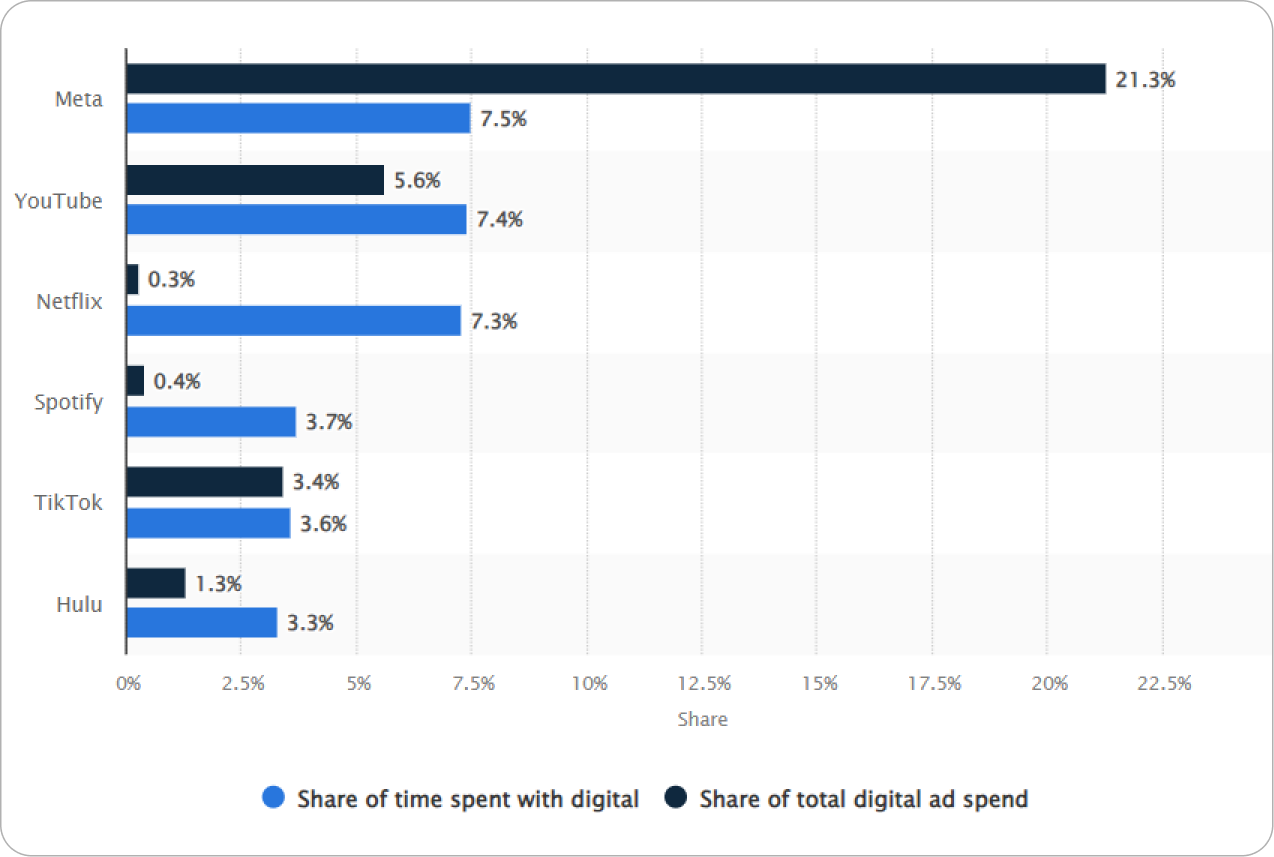
TikTok is less ad-saturated than Facebook or YouTube. Source: Statista
Another platform to keep an eye on is Reddit: with over 1.22 billion users globally, Reddit is a community-centric platform where people look for product recommendations — this makes it a good place for marketing. The only thing to remember here is that Reddit is more about meaningful interactions rather than hard-selling.
Many social media platforms also actively make shopping easier: Facebook, Instagram, and TikTok let users buy products directly, creating a frictionless shopping experience. In return, this feature helps businesses to turn casual browsing into real sales.
In short, social media is the heart of modern marketing, but success demands more than just presence — it requires creativity and a strategic approach.
Actionable tips
Invest in paid social advertising
Social media platforms are now essential tools for growing your business — if you’re not running social ads yet, you’re missing out.
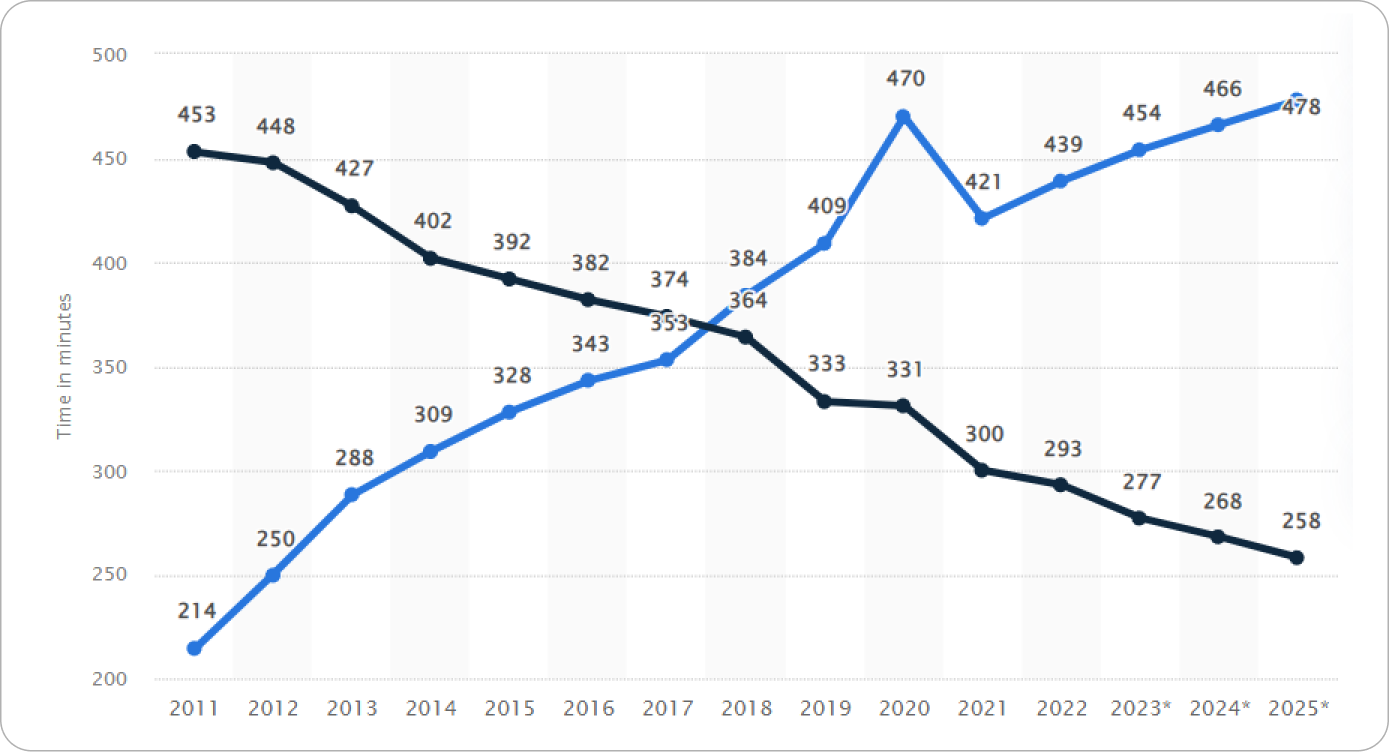
The time spent per day on digital platforms keep increasing. Source: Statista
Here’s what will help you get started:
- Start small: instead of a broad campaign, begin with a small budget focused on a single, specific goal (e.g., promoting a new product, driving traffic to a landing page, increasing brand awareness among a particular demographic). This allows for focused testing and optimization before scaling up.
- Prioritize specific platforms: don't spread yourself thin — analyze your target audience's social media usage and concentrate your ad spend on the platforms where they're most active.
- Track results: use the platforms’ tracking tools to measure the effectiveness of your campaigns accurately — this is crucial for optimizing your spending and maximizing your ROI.
- A/B test: keep testing different ad creatives, targeting options, and call-to-actions. Adjust your strategy accordingly and scale what works better.
If you're unsure which platform is right for you, check out our articles about running ads on Meta, Snapchat, TikTok, and X (Twitter).
Make your content worth watching
Grabbing attention on social media is tough, so your content has to stand out from the first second. That's why short-form videos should be the one of the main formats you’re using.
Start with a strong hook (an intriguing question, a bold statement, a striking visual), keep it within 6-15 seconds, and focus on one clear message. If you want to show how good your product is, make a specific feature the main focus of your ad and address the key pain points of your audience right from the get-go.
Listen to your audience
Social media is also the place where your customer are actively discussing things — you can tune in and get insights into how people think, what they like and dislike about your brand, industry, or competitors.
Pay attention to the tone of the conversation: do people like a particular feature of your product? Emphasize it in your content and ads. Do they complain about something? Use that feedback to adjust and improve.
Actively engaging with your audience is also a must: respond to their comments, messages, and reviews. Show that you're listening and that their opinions matter.
Get on TikTok and Reddit
TikTok and Reddit seem to be two main platforms that marketers will be betting on in the coming year, and you can hop on the trend too — just figure out which platform your target audience is most likely to use.
If you want to succeed on TikTok, experiment with trends — use viral sounds, participate in challenges, or create your own. Share tutorials or demos that show your product in action. If you combine this with UGC (user-generated content), it will be even more effective. And don’t underestimate the power of influencers (especially the niche ones) — partnering with creators who align with your brand can do wonders in terms of reach and conversions.
Reddit, on the other hand, thrives on meaningful conversations. If you want to promote your business on it, look for relevant subreddits and join them. It’s a great opportunity to figure out the problems people experience, what they like and don’t like about products like yours, what solutions would they benefit from, and let people know about your brand.
But don’t just sell — engage first instead. Answer questions, share advice, and build trust before promoting your product.
Make shopping easy for your customers
Social media is where purchases happen these days, and you can use this for driving more sales for your business. To make the most of this, link your product catalog to platforms like Facebook, Instagram, and TikTok, and use shoppable posts and ads to turn casual viewers into buyers.
If your customers need to visit your website to complete the purchase, make sure it’s optimized for mobile: fast load times, simple navigation, and clear calls-to-action are non-negotiable.
3. Evolving consumer benavior
Another big change data clearly shows lies in consumer behavior: people’s attitudes change, and so do the ways in which they shop.
The first trend here is sustainability: it is no longer optional — it’s expected. According to Kantar, 93% of consumers want to live more sustainably, and they’re putting their money where their values are – they’re willing to pay more for products that are sustainably produced. For instance, sustainability has already contributed $193 billion to the value of the world’s top 100 brands.
Yet, majority of marketers believe their sustainability agendas aren’t ambitious enough. That’s a huge gap, and at the same time a big opportunity for those who can take the lead.
Another big trends is simplicity: consumers are craving relief from constant overstimulation, which influences the way they view traditional marketing tactics. According to Google, two-thirds of consumers delay or avoid decisions if there are too many options. It's not just about the oversaturation of the market - it's also about marketing campaigns that dilute the message by focusing on too many products or features at once.
That’s why businesses need to adopt a more mindful and simplistic marketing approach: brands that focus on clarity and fewer, but better choices are winning. The main strategies here are storytelling that resonates emotionally plus messaging that’s both calm and intentional – marketing campaigns need to connect, not shout.
This tendency is closely tied to economic pressures: WordStream reports that 56% of businesses plan to reduce their marketing budgets in 2025 due to financial situation. That means marketers need to work smarter and focus on cost-effective platforms and strategies which offer measurable ROI. Simply spending a lot won't cut it anymore — the budget has to be justified and spent on something that works.
Another significant trend that continues to be relevant is creator economy: content creators are no longer just influencers — they’re trusted voices and trendsetters. Currently, the creator economy is worth $250 billion and expected to nearly double by 2027. What’s even more important, creator-led campaigns outperform traditional brand-led efforts by nearly five times in brand distinction.
All in all, this means that authenticity and connection matter a lot more for consumers than even the most expensive and perfectly-crafted marketing campaigns.
Actionable tips
Be transparent about sustainability
Consumers are demanding transparency: they want to know where your materials come from, how you treat your workers, and what steps you’re taking to protect the planet. Here’s what can help you prove your commitment:
- Sustainability reports: go beyond vague claims and publish detailed, easily understandable reports that show your progress in areas like carbon reduction, sustainable sourcing, ethical labor practices, etc.
- Supply chain spotlight: share the story about your materials, your partners, and your efforts to make your business as sustainable as possible. Show customers that you're actually stick true to your words.
- Certifications andpartnerships: highlight any certifications (like B Corp) or partnerships with environmental groups that validate your commitment – this adds credibility and builds trust for your brand.
- Visual storytelling: use visuals to demonstrate your sustainability initiatives – show off your eco-friendly packaging, your commitment to recycling, or your sustainable production processes.
If your efforts are genuine and you communicate them well, you’ll not only win consumers’ hearts but also get actual sales.
Stick to basics
Overwhelmed audiences don’t want to sift through too many choices, so keep your marketing and advertising campaigns simple. This can help you cut through the noise:
- Curated approach: focus on offering a select range of high-quality products or services instead of a dizzying array of choices. You can pair similar items together and promote them as a part of one campaign.
- Clear messaging: use simple, relatable language that highlights the core value your brand offers. Avoid marketing jargon and banalities that don’t mean much — stick to the key message (aka your USP).
- Emotional storytelling: connect on a human level and don't just list features — tell a story by focusing on how your brand solves problems and improves lives.
- Simple design: embrace minimalist design — clean, uncluttered visuals are more engaging and memorable than overwhelming graphics.
You can also partner up with content creators for campaigns that give you more exposure while feeling authentic at the same time. Micro- and nano-influencers, in particular, bring a sense of authenticity that bigger names often lack — you can leverage that to make ads and content that feels simple and relatable.
Be smart with your budget
Economic uncertainty seems to push businesses to do more with less, but that isn’t necessarily a bad thing. To avoid blowing your whole budget on marketing and advertising, focus on specific platforms and formats that deliver measurable results at reasonable costs. Social media and short-form video are especially effective here, but make sure to track your ROI to double down on what's working and cut what isn't.
Get creative with your content, too — repurpose what you already have. A blog post can become a video, a tweet can evolve into a carousel, and so on. Also, don't underestimate the power of free or lower-cost strategies like SEO and email marketing.
4. Data privacy’s growing importance
Data privacy has been a hot topic in the marketing and advertising sphere for many years. It has shifted from being a regulatory footnote to a major force shaping the strategies businesses use to target and engage their customers. Consider this: 84% of marketers change their strategies to align with new privacy rules like GDPR and Apple’s iOS updates. Basically, businesses now are actively rethinking how they can connect with audiences while respecting their data.
A big part of this change is the phaseout of third-party cookies: these tiny data trackers have powered personalized advertising for years, but their days seem to be numbered. Even though many marketers still rely on them, nearly half are exploring alternatives like social media targeting, first-party and zero-party data. These methods comply with modern privacy standards while also delivering deeper insights into customer preferences.
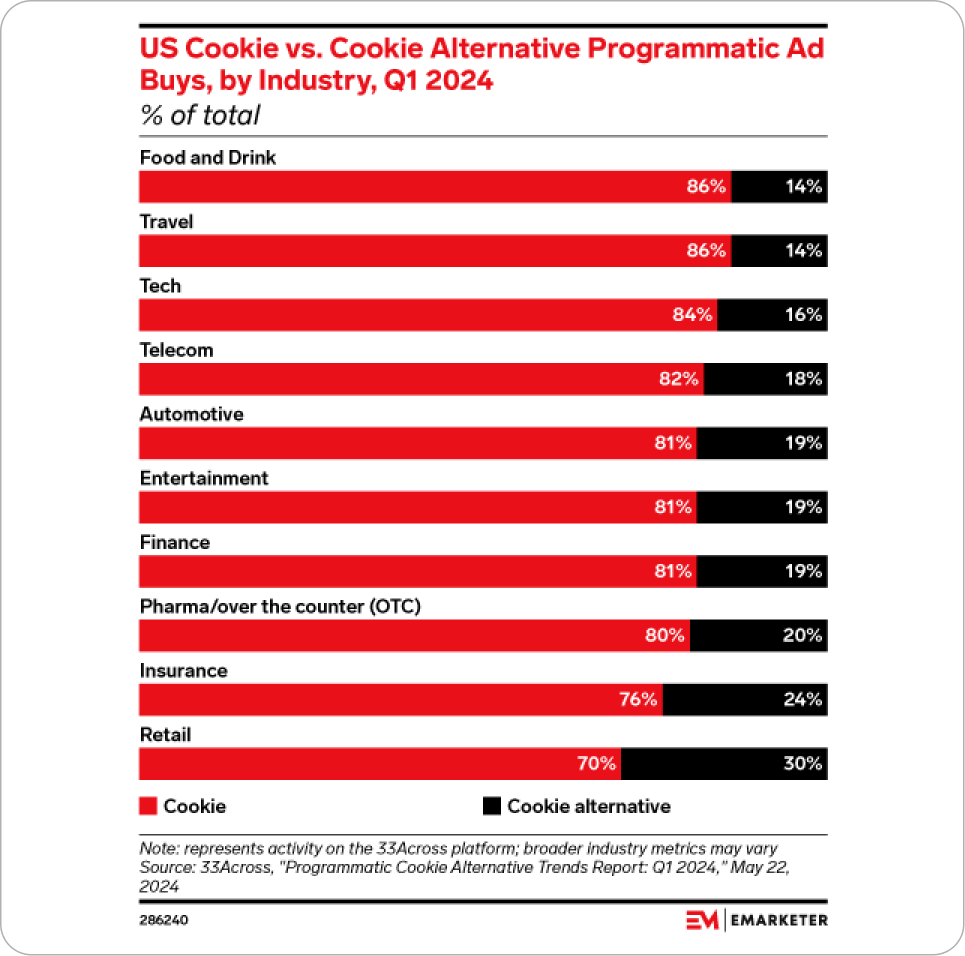
Many businesses still rely on cookies in advertising, but the alternatives become more common. Source: Emarketer
Zero- and first-party data is the information collected directly from your audience, and it can become the most valuable asset for any marketer or advertiser. That’s because unlike third-party data, it’s accurate, unique, and builds trust — customers are ready to share this information with you.
This data also drives personalization — a key factor in today’s marketing. According to HubSpot, almost all marketers think that personalization boosts customer loyalty and increases sales. AI plays an important role here: generative AI, in particular, can transform first-party data into highly personalized campaigns, which helps businesses better connect with their audience.
The key thing to remember here is that consumers want transparency and control over their data. Brands that respect it can stand out by building trust and delivering more meaningful experiences.
Actionable tips
Build a zero- and first-party data strategy
To collect and use this type data, you need to focus on creating trust and making it easy for people to share it.
You can give something in return: offer discounts, exclusive content, and other rewards in exchange for information. For example, in your loyalty program, you can ask customers about their preferences while giving them points or special offers in return.
You can also make it fun to share information. Use quizzes, polls, or surveys to learn more about your customers while keeping them entertained. For example, you might ask users about their purchasing preferences to recommend them products they’ll love.
Don’t forget to be upfront and clear — you have to let people know why you need their data and how it will help them. A simple explanation during sign-up or a short “What we do with your data” section can go a long way in building trust.
Try new ways to target without cookies
Even without third-party cookies, you can still run effective ads, and tools that big platforms are already offering can help you. For example, Facebook and Instagram let you target ads based on what people like or how they interact with content — you can run relevant ad campaigns without needing outside data.
Google also has something similar – Topics API – which allows you to show ads based on general interests instead of tracking what specific users are doing online. It’s a new way to keep ads relevant while respecting privacy.
If you’ve already collected first-party data from your customers interactions with your business, use it for creating custom audiences — it’s essential for retargeting and driving more sales. But remember to make sure that you’ve got people’s permission to use their information for advertising prior to that.
Recap
2025's marketing and advertising landscape will be dynamic, but it doesn't mean that it's unpredictable. The trends we've covered – AI, social media evolution, changing consumer needs, and data privacy – are all interconnected and can help you better prepare for the year ahead.
The path to success lies in leveraging these trends strategically, not just reacting to them. Use the insights and actionable tips we’ve shared in this article to make your campaigns truly successful.

